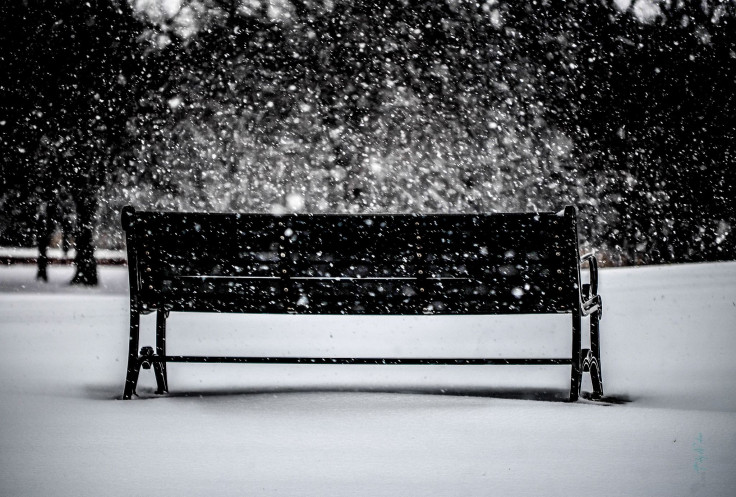Seasonal Affective Disorder Is 'Folk Psychology,' Suggests Study; No Objective Data For Seasonal Depression

Is major depression with seasonal variation — also known as seasonal affective disorder (SAD) — a valid construct? Perhaps not, according to a new study published in the journal Clinical Psychological Science, which builds upon the doubt that's been cast on the SAD theory in recent years.
While 2013 research on seasonal variations in depressive symptoms found "little if any association between seasonal change or solar radiation and depression," per the current study, there's also been growing concern with the way SAD research is conducted in general. Study authors said the research relies on the Seasonal Pattern Assessment (SPAQ), which does not measure major depression as defined by the Diagnostic and Statistical Manual of Mental Disorders (DSM) and relies on recall of past depressive episodes. Recall used in any scientific setting leaves room for bias.
So researchers from Auburn University at Montgomery — psychology professor Steven LoBello, graduate student Megan Traffanstedt, and LoBello's colleague Dr. Sheila Mehta — aimed to gain a deeper understanding of the disorder. They incorporated the Behavioral Risk Factor Surveillance System, (an annual health survey), and the Patient Health Questionnaire-8 (PHQ-8) into a survey module for 34,294 Americans aged 18 to 99 by phone. The PH-8 scale consists of eight items that reflect symptoms of major depression, the disorder that appears in the DSM with a "seasonal pattern modifier." It includes questions that ask respondents how many days during the past two weeks have they experienced a given symptom of depression.
In order to measure the amount of sunlight respondents were exposed to — the hypothesized risk factor for SAD — researchers measured the season and latitude of residence at the time of the survey. These two items serve as "proxy variables for sunlight exposure duration," researchers wrote. Next, with data from the U.S. Naval Observatory, they divided respondents among one of four groups based on the amount of daylight they were exposed to on the day of the survey: 8 to 9 hours and 59 minutes; 10 to 11 hours and 59 minutes; 12 to 13 hours and 59 minutes; or 14 hours or more of sunlight.
Researchers wanted to be sure they measured for seasonal change in depression scores of the total sample in order to see if it affected the overall pattern. However, if major depression with seasonal variation is a rare disorder, the pattern might be concealed in the total sample. So they analyzed the data for the entire sample and then again for the 1,754 respondents who scored within the depressed range on the PHQ-8 scale.
The results showed no indication that depression is associated with seasonal changes in either the total sample or the sample of depressed individuals. The season variables were not significantly related to depression scores in either sample, and there were no significant effects for season, latitude, or sunlight exposure in either sample.
"The idea that depression occurs along with seasonal changes or worsens in winter appears to be a well-entrenched folk theory," the researchers wrote. "…the current study cannot rule out the possibility that major depression with seasonal variation exists, but at a low base rate."
It may be surprising that the theory of seasonal depression lacks objective evidence, especially given the prior studies that show the part of the brain "the winter blues" stem from, as well as effective treatment. But the researchers were surprised, too.
"The data set that we used had the potential to reveal the 'excess burden' of depression in the U.S. population due to seasonal changes. So, we were surprised to find no relationship at all between prevalence of depression and seasonal changes," LoBello told Medical Daily in an email. "We simply weren’t able to find any relationship between depression prevalence and these measures of light exposure."
Depression is a recurrent illness, so it's possible someone may experience episodes in two consecutive winters. But researchers took steps to make sure respondents were not "entertaining any notions about the relationship between season and depression when the data were collected," LoBello said. But as he and his researchers concluded in the study, "merely being depressed during winter is not evidence that one is depressed because of winter."
This isn’t to discredit the seriousness of depression or the tragic rate in which episodes occur, LoBello said. Instead, he believes nothing in his and his colleagues' work "should be interpreted as minimizing depression as a significant issue for individuals and society." And of course, researchers recognize further work is needed in order to confirm their findings.
"The idea that more people experience depression in fall and winter months is widely believed by psychologists, physicians, and society at large. Given the results of this study, we believe that there’s a possibility that seasonal variation in depression may be a folk belief that has gained broad currency," LoBello said. "Despite our results, we make progress in understanding diseases whenever we rule suspected causes in or out of consideration based on evidence."
Source: Traffanstedt MK, Mehta S, LoBello SG. Major Depression With Seasonal Variation: Is It a Valid Construct? Clinical Psychological Science. 2016.



























